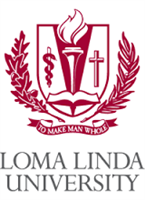- Find Your College
- Scholarships
- Pay for College
-
Articles
- COLLEGES
- Most Recent
- Affordability & Cost
- College Search
- Comparisons
- College Majors & Minors
- Myths
- News & Trends
- Tips, Tools & Advice
- Admissions
- Most Recent
- ACT & SAT
- College Admissions
- College Applications
- Myths
- Online Colleges
- Questions & Answers
- About
- Home
- >
- Browse All Majors
- >
- Health Professions And Related Programs
- >
- Rehabilitation and Therapeutic Professions
- >
- Orthotist/Prosthetist
Orthotist/Prosthetist
Select Type of Degree:
Select State:
|
#1

Northwestern University
|
|||||||||||
|
#2

University of Hartford
|
|||||||||||
|
#3

University of Pittsburgh-Pittsburgh Campus
|
|||||||||||
|
#4

Alabama State University
|
|||||||||||
|
#5

Concordia University-Saint Paul
|
|||||||||||
|
#6

Eastern Michigan University
|
|||||||||||
|
#7

Baylor College of Medicine
|
|||||||||||
|
#8

University of Washington-Seattle Campus
|
|||||||||||
|
#9

University of Texas Southwestern Medical Center
|
|||||||||||
|
#10

Loma Linda University
|
|||||||||||
|
*The estimated net prices above are College Raptor’s estimate. Please contact the college financial aid office for actual net cost figures.
|
|||||||||||
About Orthotist/Prosthetist
Orthotist/Prosthetist programs prepare individuals, in consultation with physicians and other therapists, to design and fit orthoses for patients with disabling conditions of the limbs and/or spine, and prostheses for patients who have partial or total absence of a limb or significant superficial deformity. Includes instruction in biomechanics, gait analysis, pathomechanics, kinesiology, pathology, neuroanatomy, materials science, diagnostic imaging, patient analysis and measurement, impression taking, model rectification, assistive/restorative technology and engineering applications, product finishing, diagnostic and definitive fitting and alignment, power devices, postoperative management, and patient counseling and follow-up.
Of the 212 Orthotist/Prosthetist degrees granted each year at the Masters degree level, men make up 35% percent and women make up 65% percent of the area of study. Did you know that Illinois has more students graduating with a degree in Orthotist/Prosthetist than any other state? In fact, Illinois granted 48 degrees last year! The average starting salary for an undergraduate degree in Orthotist/Prosthetist is $38,300.
Careers
The highest paying careers for Orthotist/Prosthetist majors include Health Specialties Teachers, Postsecondary, Orthotists and Prosthetists . However, another thing to consider is how much demand there is for specific jobs. Careers that are in high need that a degree in Orthotist/Prosthetist can prepare you for are Health Specialties Teachers, Postsecondary, Orthotists and Prosthetists .
Top Paying Careers
These are the highest paying careers for Orthotist/Prosthetist majors.
Most In-Demand Careers
These are the careers in highest demand for Orthotist/Prosthetist majors.
Student Demographics




Subscribe to Our Newsletter
Join thousands of students and parents learning about finding the right college, admissions secrets, scholarships, financial aid, and more.

College Raptor, Raptor, InsightFA, FinanceFirst, and “The Right College. The Best Price.” are registered trademarks of College Raptor, Inc.




